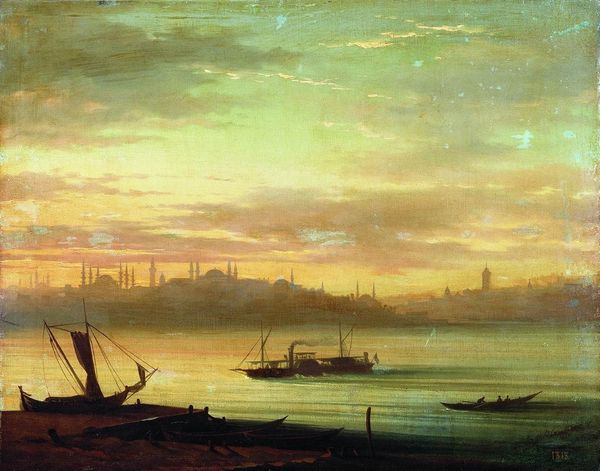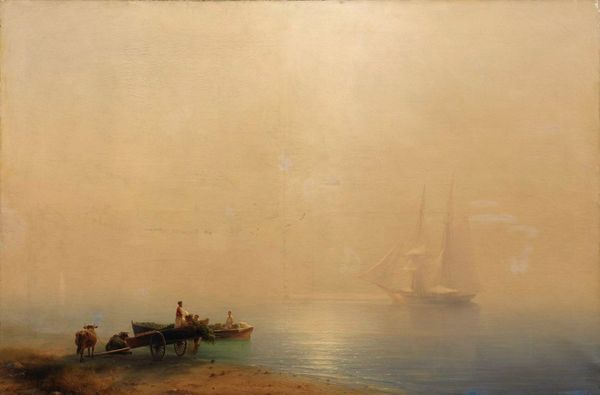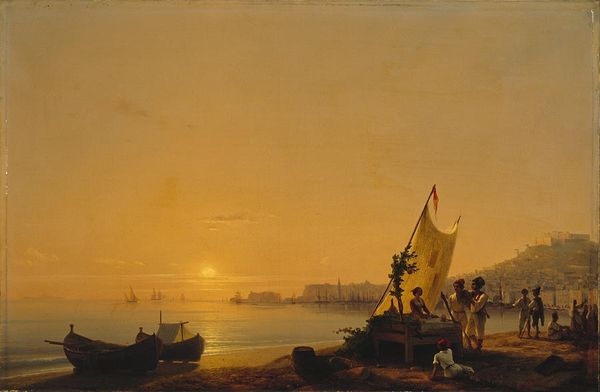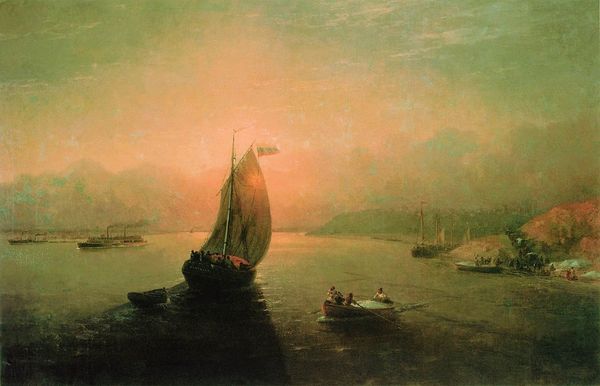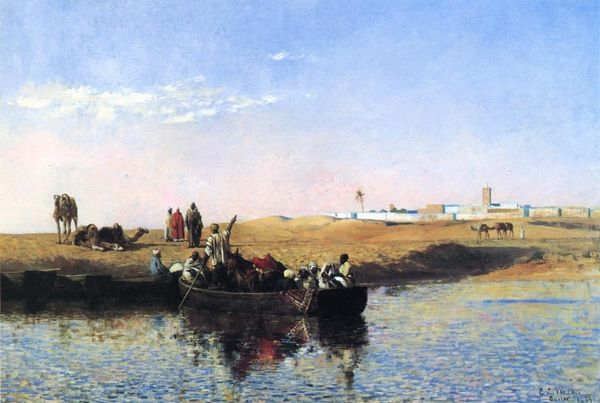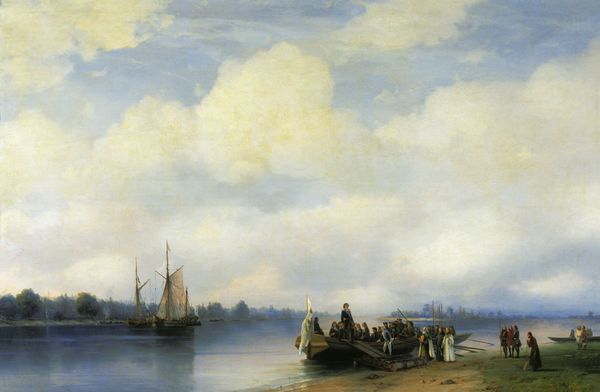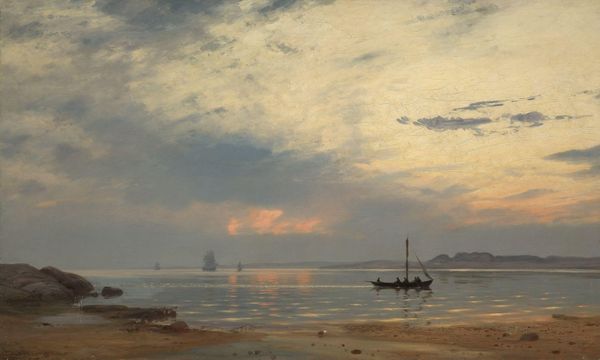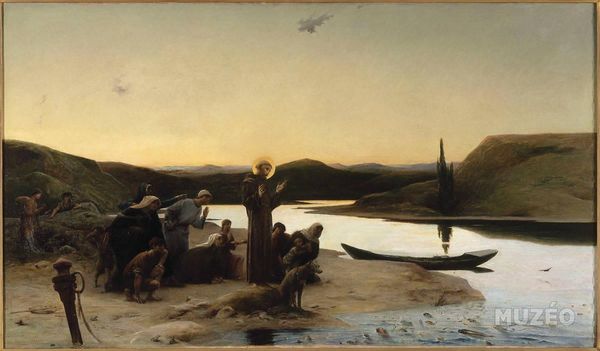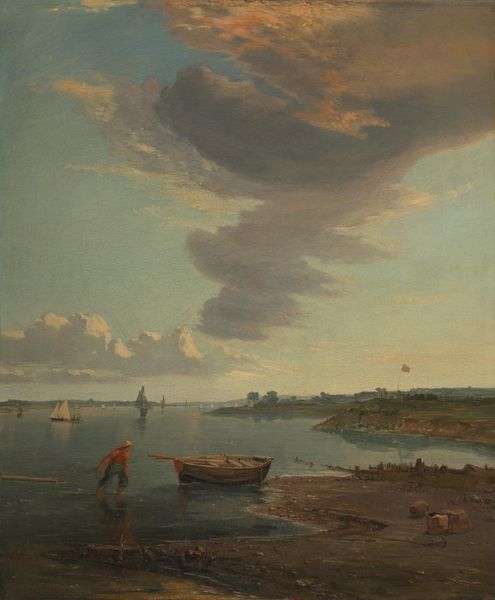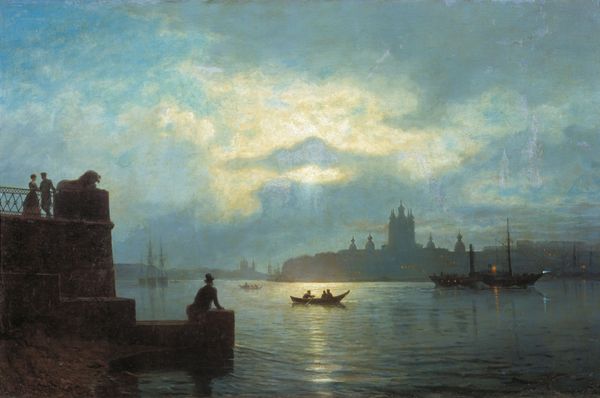
painting, oil-paint
#
portrait
#
sky
#
water colours
#
painting
#
oil-paint
#
landscape
#
romanticism
#
cloud
#
sea
Dimensions: 68 x 100 cm
Copyright: Public domain
Editor: Here we have Ivan Aivazovsky's "Mhitarists on the Island of St. Lazarus," painted in 1843 using oil paints. The overall effect is serene, almost melancholic, with that glorious sky. What stands out to you as you consider it? Curator: The recurring motif of the island, wouldn't you say, carries a profound weight? Islands, in the symbolic language of art, often represent isolation, a sanctuary, or a world set apart. How does this idea resonate with you in the context of a monastic order? Editor: I see what you mean. Maybe the island setting emphasizes the Mhitarists' withdrawal from the world to focus on their spiritual lives and scholarly pursuits. Is that sunset also a kind of symbol? Curator: Indeed. Think about the sunset's position – it dominates the background. Sunset, twilight... they frequently represent transitions, endings, or perhaps even hope on the horizon. Here, paired with the figures, what might Aivazovsky be trying to convey about the community's relationship with time, change, and perhaps the divine? Are they reflective? Hopeful? Resigned? Editor: They do seem quite contemplative. The way they are all facing the sunset, gazing at the horizon... I get the feeling that the painting represents a sense of longing, a connection with something beyond their immediate surroundings. Curator: Precisely! Aivazovsky masterfully weaves together elements of landscape and the human form, layering symbolism to invite contemplation on themes of faith, knowledge, and humanity's place in the grand tapestry of existence. Editor: I never considered the depth of symbolic meaning within a landscape. I appreciate this different view. Curator: And I, your fresh perspective! It’s rewarding to consider these paintings through new eyes.
Comments
No comments
Be the first to comment and join the conversation on the ultimate creative platform.
